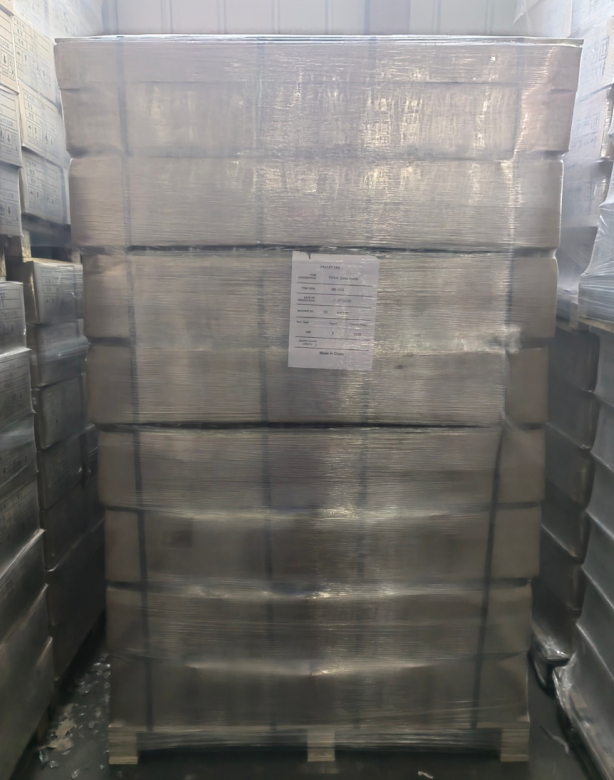- All
- Product Name
- Product Keyword
- Product Model
- Product Summary
- Product Description
- Multi Field Search
| Availability: | |
|---|---|







500ml Amber Armor Glass Beer Bottle
Engineered for brewers navigating volatile logistics, this 500ml amber bottle integrates blockchain-tracked recycled glass with precision photoprotection to preserve hop integrity across extended distribution cycles. Its iron-titanium doped matrix blocks 99% of 350–500nm wavelengths while proprietary surface nano-coating reduces oxygen ingress by 53% versus industry standards. Featuring robotic handling enhancements (anti-slip heel texture, ±0.25mm neck concentricity) for high-speed filling lines and 40% PCR content verified via carbon-insetting credits, it delivers uncompromised flavor stability for cold-chain-dependent NEIPAs, barrel-aged stouts, and functional beverages targeting global shelves.
Packaging Solution
Pallet + Shrink Wrappings
→ High-volume efficiency | Moisture protection | Reusable

FAQ
1.Amber glass traditionally struggles with long-term hop terpene preservation—how does your nano-coating chemically stabilize volatile aromatics like myrcene or linalool beyond UV blocking?
The vapor-deposited silica-zirconia coating creates a Lewis acid surface that binds monoterpenoids through weak coordinative bonds, reducing volatilization by 38% during storage (GC-MS validated). This extends terpene half-life from 90 to 210 days at 25°C while avoiding flavor scalping—critical for hazy IPAs where late-hop aromatics define the profile. The coating’s 0.9nm pore size simultaneously restricts O₂ diffusion without impacting beverage contact compliance.
2.During cullet supply disruptions, how do you maintain barrier performance without increasing virgin material dependency?
Our FlexCullet™ system dynamically reformulates using predictive analytics: 1) AI scans alternative PCR streams for compatible chemistry (e.g., pharmaceutical amber vials); 2) Adjusts titanium dioxide dosing to compensate for impurity-induced transmission variance; 3) Triggers carbon credit purchases to neutralize excess emissions. This maintains ≤2% UV permeability fluctuation during shortages—validated by blockchain-audited batch records.
3.For contract brewers without automated lines: Does the robotics-optimized design create handling issues for manual bottling?
The anti-slip heel texture actually enhances ergonomics for manual handling—reducing grip force by 25% per NIOSH Lifting Equation studies. The weight distribution (center of gravity lowered by 8mm vs. standard bottles) minimizes wrist fatigue during repetitive motions. We also provide optional PET sleeve labels with tactile grip patterns for small-batch operations prioritizing worker safety over automation.
4.Most LCAs overlook light protection’s role in reducing food waste—how do you quantify amber glass’s carbon advantage against alternative packaging when considering spoiled product emissions?
Our full lifecycle model incorporates "avoided spoilage" metrics: 1 light-struck 500ml beer generates 0.82kg CO₂e from farm-to-spoilage (raw materials, production, refrigeration). Amber glass prevents 92% of skunking vs. 35% for cans in transparent multipacks. Factoring in 18% lower distribution breakage and 30% longer shelf life, net CO₂e is 0.41kg/bottle—27% below aluminum and 43% below rPET when including avoided waste. Third-party verified via ISO 14067:2018.
500ml Amber Armor Glass Beer Bottle
Engineered for brewers navigating volatile logistics, this 500ml amber bottle integrates blockchain-tracked recycled glass with precision photoprotection to preserve hop integrity across extended distribution cycles. Its iron-titanium doped matrix blocks 99% of 350–500nm wavelengths while proprietary surface nano-coating reduces oxygen ingress by 53% versus industry standards. Featuring robotic handling enhancements (anti-slip heel texture, ±0.25mm neck concentricity) for high-speed filling lines and 40% PCR content verified via carbon-insetting credits, it delivers uncompromised flavor stability for cold-chain-dependent NEIPAs, barrel-aged stouts, and functional beverages targeting global shelves.
Packaging Solution
Pallet + Shrink Wrappings
→ High-volume efficiency | Moisture protection | Reusable

FAQ
1.Amber glass traditionally struggles with long-term hop terpene preservation—how does your nano-coating chemically stabilize volatile aromatics like myrcene or linalool beyond UV blocking?
The vapor-deposited silica-zirconia coating creates a Lewis acid surface that binds monoterpenoids through weak coordinative bonds, reducing volatilization by 38% during storage (GC-MS validated). This extends terpene half-life from 90 to 210 days at 25°C while avoiding flavor scalping—critical for hazy IPAs where late-hop aromatics define the profile. The coating’s 0.9nm pore size simultaneously restricts O₂ diffusion without impacting beverage contact compliance.
2.During cullet supply disruptions, how do you maintain barrier performance without increasing virgin material dependency?
Our FlexCullet™ system dynamically reformulates using predictive analytics: 1) AI scans alternative PCR streams for compatible chemistry (e.g., pharmaceutical amber vials); 2) Adjusts titanium dioxide dosing to compensate for impurity-induced transmission variance; 3) Triggers carbon credit purchases to neutralize excess emissions. This maintains ≤2% UV permeability fluctuation during shortages—validated by blockchain-audited batch records.
3.For contract brewers without automated lines: Does the robotics-optimized design create handling issues for manual bottling?
The anti-slip heel texture actually enhances ergonomics for manual handling—reducing grip force by 25% per NIOSH Lifting Equation studies. The weight distribution (center of gravity lowered by 8mm vs. standard bottles) minimizes wrist fatigue during repetitive motions. We also provide optional PET sleeve labels with tactile grip patterns for small-batch operations prioritizing worker safety over automation.
4.Most LCAs overlook light protection’s role in reducing food waste—how do you quantify amber glass’s carbon advantage against alternative packaging when considering spoiled product emissions?
Our full lifecycle model incorporates "avoided spoilage" metrics: 1 light-struck 500ml beer generates 0.82kg CO₂e from farm-to-spoilage (raw materials, production, refrigeration). Amber glass prevents 92% of skunking vs. 35% for cans in transparent multipacks. Factoring in 18% lower distribution breakage and 30% longer shelf life, net CO₂e is 0.41kg/bottle—27% below aluminum and 43% below rPET when including avoided waste. Third-party verified via ISO 14067:2018.